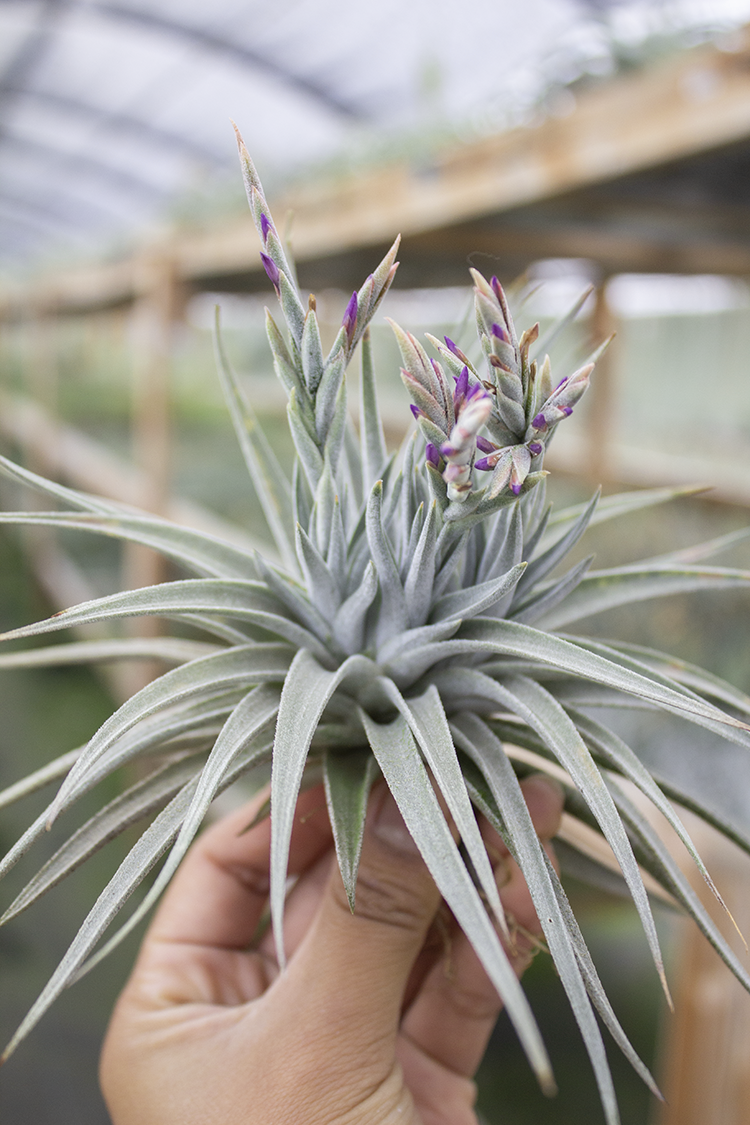There is a common misconception that air plants are very easy to keep alive. This is contributed by misinformation. Below we will go over what we have found to be helpful for not only keeping your plants alive, but creating a a consistent habitat for them to thrive in. Since there are several factors to keeping your plants happy, read and make your own decision on what’s best for you.
Water
Be Consistent
Water is usually the culprit when diagnosing why a plant has died. It is important to maintain a CONSISTENT watering schedule. Being consistent is important because air plants really start to thrive once they have acclimated to their surroundings. That being said, It is always better to underwater than over water. When you over water the plant rots out and dies immediately. When you under water there are warning signs. This gives you the opportunity to correct it.
Your Specific Environment
When watering it is also important to keep in mind YOUR specific environment. By environment, we mean climate, air flow and lighting. For an example: If you plant is in an air conditioned home, and doesn’t receive a whole lot of light, it may only require watering once a week. That being said, even though an air conditioned home is cooler, it is also drier. So start with once a week, and look for curvature of the leaves. If that is occurring add another watering, but always let the plant dry out between watering cycles.
Types of Water
Also the type of water is important. For optimal results use mineral water with a PH of 5.5 – 6. This will help keep the calcium deposits and other pollutants off your plants. This does not mean the plant cannot survive on tap water, we are only offering what is optimal. If you use Reverse Osmosis water be sure to add nutrients back in, as watering with pure water will leach the nutrients out of the plant.
Green to White Spectrum
Lastly, the type of variety is important. We break it down into two extremes (Green Varieties and White Varieties.) Green varieties most of the time come from low land habitats (ex. the rainforest.) They can take less light, and more water. White varieties, which are white because they are covered with trichomes, generally come from mountainous / drier habitats. These varieties can take much less water, but need more light.
Light
Direct Sunlight
As discussed in the water section, light requirements are different for different varieties. We DO NOT recommend direct sunlight, especially between the hours of 10 and 2. Direct sunlight can cause burn, and all of our plants are greenhouse grown. This does not mean tillandsias cannot thrive in direct light. It only means it is variety specific. So to avoid heart ache, it is better to stay away from direct sunlight. It only takes one unusually hot day to fry your plants. Trust us, we have been there.
Lux Levels
Generally speaking most tillandsias thrive in bright filtered light. That is usually around 20,000 – 30,000 lux. This is a general guideline. Many green varieties can sustain in darker environments, and many white varieties can sustain in brighter environments. Always keep in mind the temperature and variety when placing your plants.
Air Flow
Air flow is another important factor to keeping your plants happy. They aren’t called air plants for no reason. These plants thrive with proper air movement, and usually the kitchen is the best place, because it is most used room in the house, and it has an adequate amount of light. If temperatures permit it, plants do best outside because they receive more air flow.
Temperature
Temperature is also a very important factor. The good thing about tillandsias is that they can tolerate a spectrum of temperatures. Most tillandsias can survive in temperatures from 100+ degrees down to 32 degrees Fahrenheit. Keep in mind that is only surviving not thriving. Optimally most varieties like temperatures in the high 70’s. A larger differentiation in day and night time temperature will also help to stimulate more color. You may find the need to increase watering in higher temperatures. It is not unheard of to water every other day when temperatures exceed 90 degrees.


